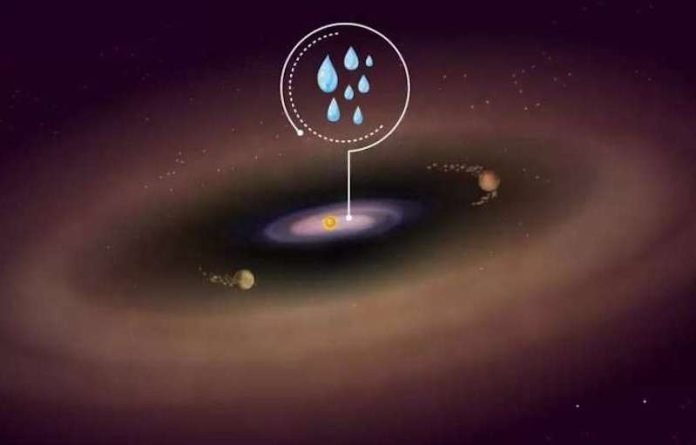
The MINDS research collaboration, led by the Max Planck Institute for Astronomy (MPIA), has made a groundbreaking discovery: water in the inner region of a planet-forming disk surrounding the young star PDS 70.
Observations were made using the James Webb Space Telescope (JWST), and this marks the first detection of its kind in a disk that hosts at least two planets.
Boosting Chances of Habitable Planets
Astronomers expect terrestrial planets to be forming in this water-rich zone. The water reservoir could greatly increase the habitability potential of any rocky planets that are formed.
This discovery provides a crucial clue about how water could be supplied to potentially habitable planets during their formation phase, besides the traditional view of water being delivered through later impacts of water-bearing asteroids.
Unlocking Mysteries of Life’s Origins
The availability of water, a key ingredient for life as we know it, on rocky exoplanets has been a topic of debate among scientists.
The primary mechanism through which water reaches these bodies has so far been understood as a bombardment of the planet’s surface by water-bearing asteroids.
This discovery offers an alternative view. “We now may have found evidence water could also serve as one of the initial ingredients of rocky planets and be available at birth,” said Giulia Perotti, an astronomer at MPIA.
Investigating Water’s Origin
Several scenarios are being considered by the MINDS team to explain the origin of this water. One theory is that it could be a remnant from an initially water-rich nebula that preceded the disk stage.
Another possibility is that the water originated from gas entering from the outer rims of the PDS 70 disk. A combination of all these options is also likely, according to Perotti.
Implications for Exoplanet Habitability
The discovery of water in a planet-forming zone could have far-reaching implications for understanding the potential for life on exoplanets.
Not only does it provide an alternative mechanism for water delivery to planets, but it also could mean that many terrestrial planets are born with the necessary ingredients for life.
Further Observations Awaited
The team is eagerly awaiting another set of JWST observations to get more detailed images of the inner PDS 70 disk, hoping for additional clues about terrestrial planets or sub-Neptunes forming inside the water reservoir.
Further observations with ground-based telescopes are also planned to complete the picture.
The study was published in Nature.
Follow us on Twitter for more articles about this topic.



